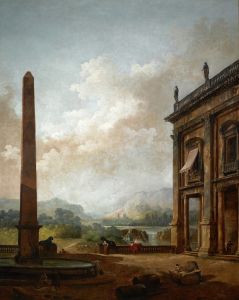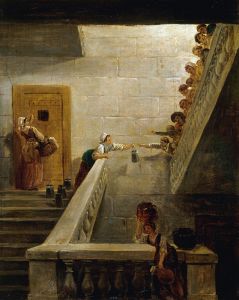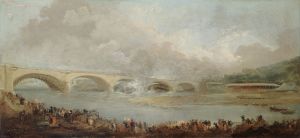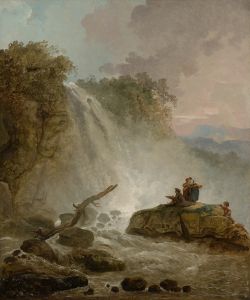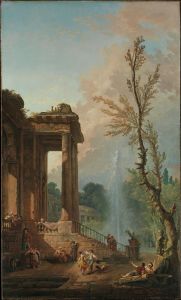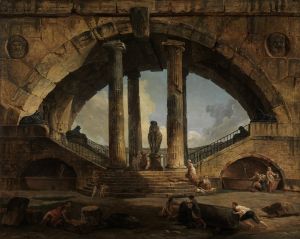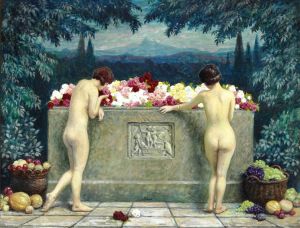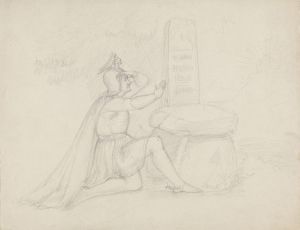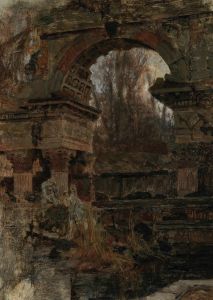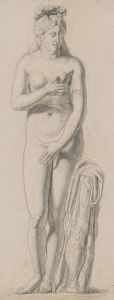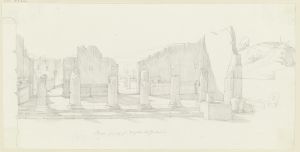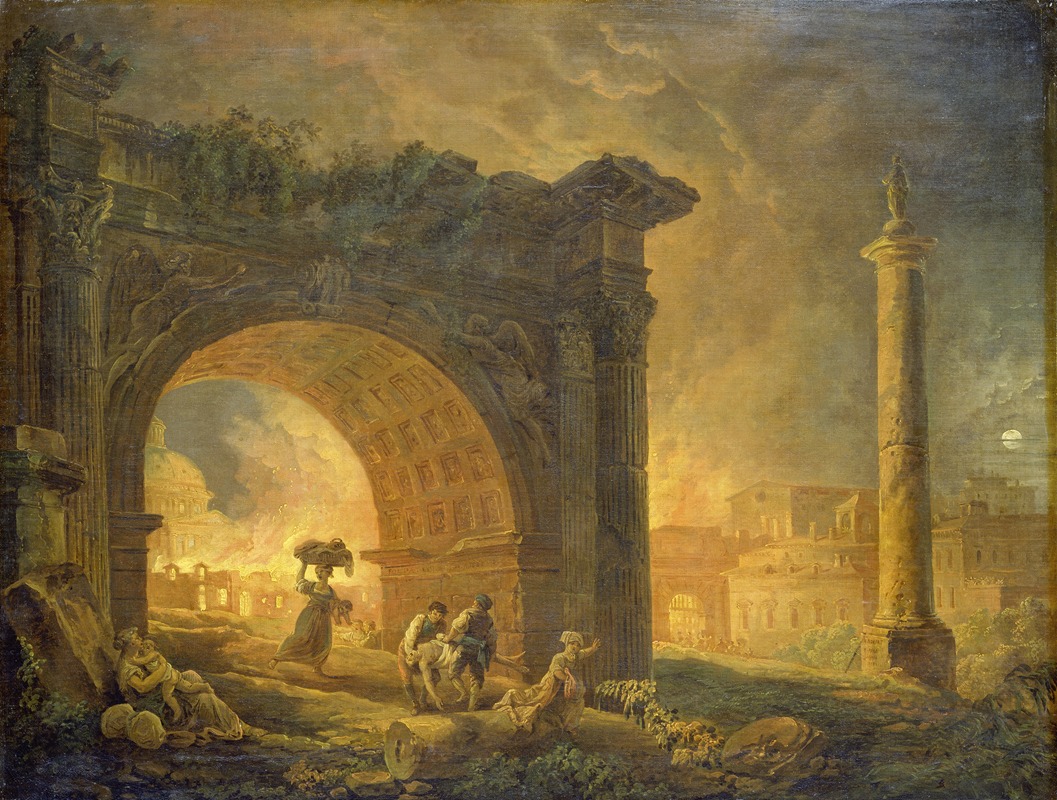
Roman Ruins
A hand-painted replica of Hubert Robert’s masterpiece Roman Ruins, meticulously crafted by professional artists to capture the true essence of the original. Each piece is created with museum-quality canvas and rare mineral pigments, carefully painted by experienced artists with delicate brushstrokes and rich, layered colors to perfectly recreate the texture of the original artwork. Unlike machine-printed reproductions, this hand-painted version brings the painting to life, infused with the artist’s emotions and skill in every stroke. Whether for personal collection or home decoration, it instantly elevates the artistic atmosphere of any space.
"Roman Ruins" is a painting by the French artist Hubert Robert, who is renowned for his depictions of classical ruins and landscapes. Born in 1733, Robert became a prominent figure in the 18th-century art world, particularly known for his romanticized visions of ancient architecture and his ability to blend reality with imagination.
The painting "Roman Ruins" exemplifies Robert's fascination with the grandeur and decay of ancient Rome. It captures a scene filled with the remnants of Roman architecture, showcasing his skill in rendering the textures and details of crumbling stone and overgrown vegetation. The ruins are often depicted in a state of picturesque decay, which was a popular theme during the Romantic period, reflecting a sense of nostalgia and the passage of time.
Hubert Robert's work was heavily influenced by his time in Italy, where he spent several years studying and sketching the ruins of Rome. This period was crucial in shaping his artistic vision, as he was able to immerse himself in the classical heritage that would become a central theme in his paintings. His ability to evoke the grandeur of ancient Rome while also highlighting its decline resonated with the tastes of his contemporaries, who were captivated by the romantic allure of the past.
In "Roman Ruins," Robert often included figures that provide a sense of scale and human presence amidst the vast architectural remnants. These figures are typically engaged in various activities, such as exploring the ruins or resting, which adds a narrative element to the scene. The interplay between the human figures and the monumental structures emphasizes the contrast between the transient nature of human life and the enduring legacy of the ancient world.
The composition of "Roman Ruins" is carefully balanced, with a strong sense of perspective that draws the viewer's eye into the depths of the scene. Robert's use of light and shadow enhances the three-dimensional quality of the ruins, creating a dramatic and immersive effect. The painting's color palette, often dominated by earthy tones and muted hues, further contributes to the sense of antiquity and timelessness.
Hubert Robert's "Roman Ruins" not only reflects his technical prowess as a painter but also his deep appreciation for history and architecture. His works were highly sought after during his lifetime, and he enjoyed considerable success and recognition. Today, his paintings are held in numerous prestigious collections, including the Louvre Museum in Paris, where they continue to be admired for their beauty and historical significance.
In summary, "Roman Ruins" by Hubert Robert is a masterful depiction of the remnants of ancient Rome, showcasing the artist's ability to blend historical accuracy with romantic imagination. Through his detailed renderings and evocative compositions, Robert invites viewers to reflect on the passage of time and the enduring legacy of the classical world.





![Pyramids of Geezeh [Giza].](/imgs/217529/s/david-roberts-pyramids-of-geezeh-giza-edcbd9cd.jpg)
![The Great Sphinx, Pyramids of Gizeh [Giza]. July 17th, 1839.](/imgs/217557/s/david-roberts-the-great-sphinx-pyramids-of-gizeh-giza-july-17th-1839-98f269c8.jpg)
